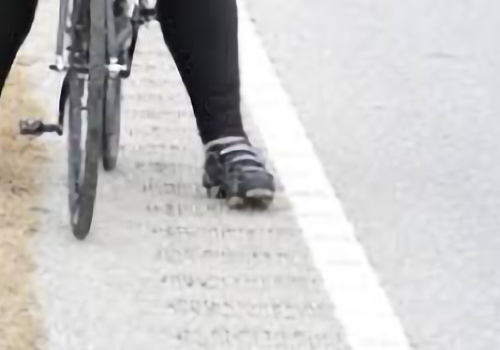Cycling and Rumble Strips

What’s in Your Cycling First Aid Kit?
August 10, 2018
What are the best winter cycling clothes? Here are our top 10 choices for 2020
January 20, 2020WARNING: Rant Ahead!
In my location, West Columbia, South Carolina, there is a road that I travel nearly every day. This road is a two lane with lots of traffic. I personally would not ride my bike along this road because of how often it is used and because large semi-tractor trailer trucks use this road. BUT, I have seen people walking and bicyclist who walk and ride along the shoulder of the road.Recently, this road was re-paved to fix the many potholes that had appeared through the years. Not too long after it was paved, rumble strips showed up along the shoulders of the road. In case you do not know what rumble strips are, they are small indentations along the sides of the road put there to alert drivers from drifting out of the lane. Some rumble strips are placed along the center of the road between the lanes, but these are not those types of rumble strips. Also, the speed limit of this particular road is only 35 miles an hour.
As a cyclists, rumble strips are very hazardous when riding. Cyclists tend to try and avoid small holes and debris in the road to keep their tires from going flat. It irritates me when roads that have a decent shoulder to ride on, are outfitted with rumble strips, removing that area to ride in! Adding rumble strips on the shoulders of roads gives a cyclists no choice but to ride closer to the center of the lane. Although the center of the lane is an ideal place to ride, it tends to slow down traffic on longer two lane roads, and because of lack of education, gives cyclists a bad reputation to people in cars.
In my opinion, if a road requires rumble strips, an adequate area needs to be added for cyclists to ride in order to keep the cyclists safe while allowing cars to pass the cyclists. Of course I would love to have a standard 5 foot bike lane on any road, but in our gas guzzling society, we do not plan well for non-auto drivers. Too many times a road will have the solid white line on the right hand side and a 6" or 8" paved area for the shoulder. Rumble strips look to be around 6" wide and are usually placed within the white line or a little past the line.
Benefits of Rumble Strips
Now that I've ranted for a bit, let's look at the benefits of rumble strips on the roadway. According to the US DOT website, the installation of rumble strips has reduced the amounts of crashes as much as 70% in some states. As an automobile driver, I am glad to see the amount of crashes reduced and I am all for keeping auto drivers safe. I can also even understand the use of rumble strips to keep cyclists off of certain unsafe roads. If, and only if, there is a cycling and pedestrian plan in use that provides safety and routes for cyclists and pedestrians.Rumble Strip Guidelines
Looking at the US DOT website, there are guidelines to follow when implementing rumble strips. Here's a look at what I found:- Incorporate on all rural divided highways, both inside and outside shoulders.
- Incorporate on all rural undivided highways with shoulder widths 1.8 m (6 ft) or greater.
- Incorporate on all rural undivided highways with shoulder widths 1.2 m (4 ft) to 1.8 m if evaluation of run-off-the-road crashes versus bicycle use supports use of rumble strips and public acceptance is evident.
- Incorporate on any rural highway with a history of run-off-the-road crashes.
- Do not incorporate on shoulders in urban areas, on curb/gutter sections, on bridge structures, or through intersections, driveway entrances, and ramp entrances/exits.
- Continuous rumble strips are preferred over intermittent.
According to this, the road I am writing about should never have had the strips installed. "Do not incorporate on shoulders in urban areas..."
Final Thoughts
West Columbia, Lexington, and the Columbia, South Carolina areas need to seriously consider cyclists when planning new roads and road repaving. Adding the 1.8 or 1.2 meters of space for cyclists on the roads will greatly increase the number of cyclists riding our roads and help to alleviate congestion in some areas. Unfortunately, some people who live in these areas can not afford vehicles and rely on public transportation or bicycles to get to work or to shop. Creating an unsafe road for cyclists can harm a person's livelihood, or worse, cause personal harm.Education for both cyclists and auto drivers should and must be implemented to create safe roads for everyone. Bicycle enthusiasts and groups should work closely with city and DOT planners to give thought into road designs and implementations. Public hearings need to be held for input into road changes like adding rumble strips, or adding shoulders for cyclists and pedestrians.
Whatever your role is within your city, cyclists, pedestrian or auto driver, be involved. Think of others in different situations than yours and help them out.
Stay safe and keep riding!



